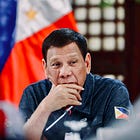This piece is freely available to read. Become a paid subscriber today and help keep Mencari News financially afloat so that we can continue to pay our writers for their insight and expertise.

From Nepal, Indonesia, Bangladesh, Sri Lanka, Morocco, and Madagascar, the Gen-Z took to the streets to protest massive corruption and inequality. These were violent protests and uncontrollable.
State offices, businesses, and private homes were set on fire. There were deaths, including protesters in school uniforms. Some led to abrupt regime changes.
For instance, political leaders in the poor Himalayan region and on an eastern African island had fled, leaving behind their countries in flames. In the former French colony, the leader was forced to leave when an elite army unit defected to the protesters, hurrying to board a French military plane to safety out of Madagascar.
Truth matters. Quality journalism costs.
Your subscription to Mencari (Australia) directly funds the investigative reporting our democracy needs. For less than a coffee per week, you enable our journalists to uncover stories that powerful interests would rather keep hidden. There is no corporate influence involved. No compromises. Just honest journalism when we need it most.
The Straw Hat Pirates’ Jolly Roger flag, popularized by a Japanese One Piece anime, has become a symbol of Gen-Z protests worldwide, including in the Philippines. Can the Gen-Z also spark a regime change in the Philippines? On September 21, there had been serious efforts to replicate the Gen-Z uprising in the Philippines, and young protesters were urged to storm the Malacanang Palace and burn it down to force President Ferdinand Marcos to step down.
Police arrested dozens, including teenage protesters, when they attacked and destroyed a small hotel about a kilometer away from Malacanang Palace. The mayhem failed to produce a desired effect to force the Armed Forces’ leadership to withdraw support from the Marcos government, similar to what had happened more than two decades ago, a military-backed peaceful uprising led to regime change.
Weeks later, on one October weekend, there was an attempt to storm the palatial homes of wealthy lawmakers in gated villages in Makati, as a Cavite lawmaker incited protesters to attack the mansions and take back what was stolen from the people.
It was a poor copy of the Gen-Z protests in Jakarta and Kathmandu. It seems that Filipino Gen-Z was not interested in such violent protests, although students from major universities in Manila had walked out of their classes to protest corruption.
A group of people, who desperately wanted Marcos remove from power would not stop from plotting a regime change. There were rumors swirling these same people plotting against Marcos planned a three-phased protests culminating in a massive anti-corruption on November 30, hijacking the trillion-peso protest march organized by the Catholc Church-based groups, business, civil society and some retired generals.
The first phase include targetted attacks on homes of some politicians linked to billions of pesos “ghost” infrastructure projects, which did not traction. The second phase involves pockets of mass actions to drum up support for the November 30 protests. Finally, in the third phase, they would mobilize a huge crowd to hijack the trillion-peso protest march, sending a large crowd to go to Malacañang to force Marcos to step down, hoping the military leadership would defect to the protesters’ side.
The group did not really abandon the EDSA 2 template, a bloodless uprising that the Philippines is known for since 1986. The group knew the people were getting impatient with the slow investigation into the billion-peso flood control irregularity, as well as the lack of transparency in the work of the independent commission.
They were also hoping that Marcos and his family would be implicated in the anomaly, which would make it easier for them to agitate the people to revolt. As it stands, various groups protesting against corruption have separate agendas. They all agree that corrupt politicians, public servants, and the private contractors who are in cahoots should be jailed and their assets seized.
However, some other groups wanted more. A group that supported the Vice President, Sara Duterte, wanted Marcos to step down and replaced by his vice president. Other groups who wanted Marcos out, opted by a council to replace Maros and did not want Sara to takeover.
But a big majority wanted Marcos to stay and run after corrupt politicians, including his relatives, like former speaker Martin Romualdez, to be held accountable. The role of Gen-Z in the anti-corruption protests in the Philippines could be romanticized.
All Filipinos hated corruption and all are fed with politicians and their relatives who flaunt their wealth as millions of people wallow in poverty, joblessness, and inequality. Filipinos are capable of overthrowing corrupt leaders. However, in a peaceful way. That sets the Philippines apart from other countries.
The opinions expressed are those of the author and do not necessarily represent the views of this publication.
Got a News Tip?
Contact our editor via Proton Mail encrypted, X Direct Message, LinkedIn, or email. You can securely message him on Signal by using his username, Miko Santos.
Sustaining Mencari Requires Your Support
Independent journalism costs money. Help us continue delivering in-depth investigations and unfiltered commentary on the world's real stories. Your financial contribution enables thorough investigative work and thoughtful analysis, all supported by a dedicated community committed to accuracy and transparency.
Subscribe today to unlock our full archive of investigative reporting and fearless analysis. Subscribing to independent media outlets represents more than just information consumption—it embodies a commitment to factual reporting.
Not ready to be paid subscribe, but appreciate the newsletter ? Grab us a beer or snag the exclusive ad spot at the top of next week's newsletter.






